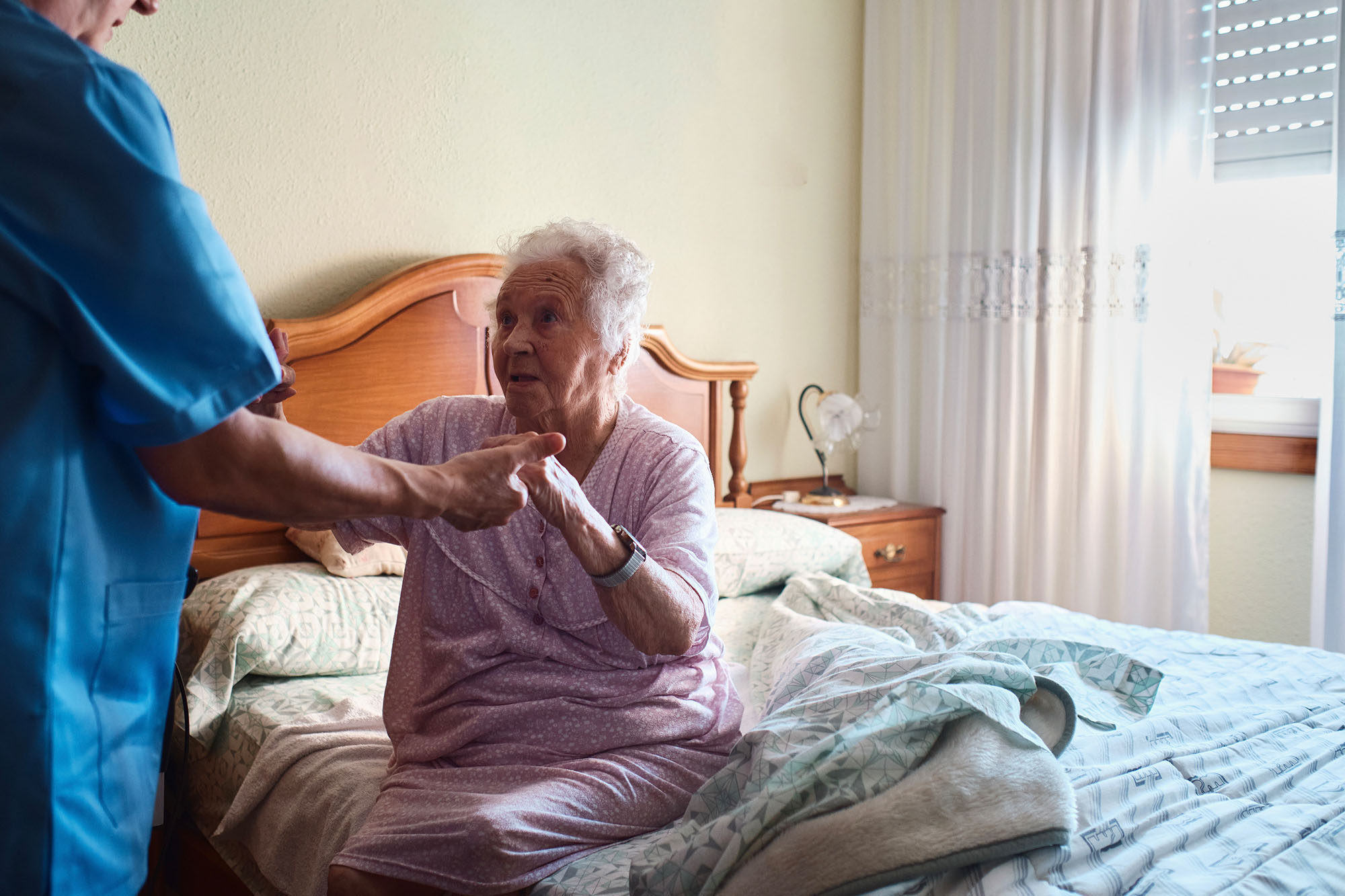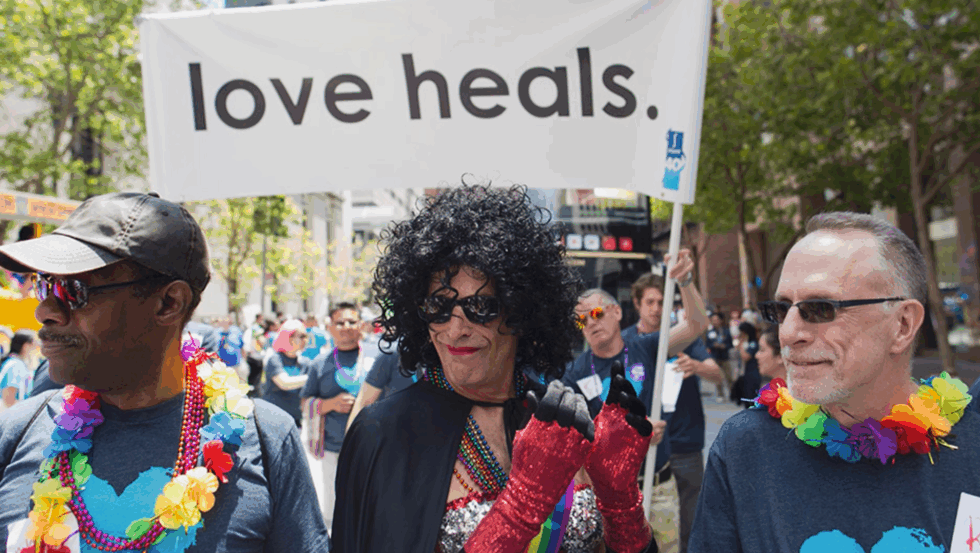Opportunity: Ensure palliative care reaches and meets the needs and preferences of communities of color and other underserved populations.
Potential stakeholder actions:
California stands as not only the largest state, but also one of the most diverse. Among its 39.5 million residents, 65% are people of color, 27% are foreign-born, and 9% identify as LGBTQ. Regrettably, considerable inequities in health and health care persist for these diverse populations, including those with serious illnesses. A 2019 California statewide survey, commissioned by the California Health Care Foundation (CHCF), highlighted disparities across people of color and those with low incomes concerning important conversations about medical preferences, instances of discrimination while seeking health care, and the degree of trust in health care providers (See “Health Disparities Experienced by People of Color and Those with Low Incomes”).
Health Disparities Experienced by People of Color and Those with Low Incomes
| white | Black | Asian / Pacific Islander | Latino/X | <150 FPL | |
|---|---|---|---|---|---|
| Have not talked with a decisionmaker about the kind of medical care they would want at the end of life | 44% | 62% | 70% | NA | 62% |
| Have not documented wishes for medical treatment at the end of life | 58% | 68% | NA | 76% | 74% |
| Have felt judgment or discrimination from providers | 14% | 37% | 15% | 22% | 32% |
| Have a lot of trust in providers | 49% | 39% | 33% | 32% | 34% |
| Notes: FPL is federal poverty level. NA is not available. | |||||
High-quality palliative care (PC) has the potential to mitigate many of these disparities. Unfortunately, data on equitable access to and use of palliative care in California are lacking. It is likely that California has made strides in narrowing the gap for people with low incomes by mandating that Medi-Cal managed care plans offer palliative care. Still, findings on whether people of color and other historically marginalized communities experience inequities in access to or use of PC are inconclusive. If there are gaps in PC usage, it cannot be explained by differences in care preferences because 9 in 10 Californians, regardless of race or ethnicity, say they would want the support offered by palliative care if they had a serious illness.
The field of palliative care is still in the early stages of learning how to ensure it reaches and meets the needs and preferences of communities of color and other underserved populations. Meanwhile, three actions can be taken today.
Action: Analyze data to identify areas of disparity and listen to community needs.
Health plans and palliative care programs can use analytics, including community assessments, to identify potential areas of inequity in access, acceptance, and quality of PC services. They can also conduct listening tours with community members to learn about the communities’ priorities and about the barriers to access and acceptance of palliative care services within that context. Participatory processes, such as patient and advisory councils or focus groups, should be integrated into an ongoing practice to listen to community needs, with special attention to communities typically underrepresented (e.g., limited English proficiency, experiencing homelessness or marginally housed, undocumented). PC teams should consider adding some measures of equity to their PC quality dashboards.
Action: Tailor programming and communication to respond to community needs.
Although there is still more to learn about how to adapt palliative care programs to meet the needs of people of color and other underserved communities, some known strategies could be implemented more widely today.
- Launch or sponsor community engagement programs. Community engagement and education programs can build awareness and acceptance of palliative care services in the community. See Opportunity 2, “Uptake,” for more information about this cross-cutting strategy.
- Partner with or support the creation of Serious Illness Care (SIC) Navigation Programs led by community health workers. SIC Navigation Programs provide nonmedical services to seriously ill patients and caregivers, often in their homes. One example of such a program is the Advanced Illness Care Program developed by the AC Care Alliance. The AC Care Alliance delivers comprehensive nonmedical care to people with serious illness, encompassing social, emotional, spiritual, and caregiver support. Community health workers are trained as serious illness care navigators, with oversight by a nurse trained in palliative care. Among other social, emotional, and spiritual support services, care navigators can explain the benefits of PC and how it differs from hospice. They can also empower participants to ask for a PC consultation if they qualify and help them navigate that conversation with their primary care provider or specialist. These competencies can be built in stand-alone organizations focused on serious illness or can be incorporated into aligned community health worker and lay navigation programs (e.g., complex care management) tailored to the needs of specific populations.
- Integrate language capabilities and cultural knowledge. Ensure palliative care programs have the necessary language capabilities and cultural fluency to effectively serve their respective populations. For example, the Chinese American Coalition for Compassionate Care partnered with Kaiser Permanente to develop a culturally attuned, Mandarin-language dictionary of serious illness care terms for use by clinicians, staff, and interpreters.
- Leverage telemedicine (e.g., video visits) to provide palliative care to people who have difficulty attending traditional office visits. Telemedicine can provide access to a more robust and diverse specialty palliative care workforce. If telemedicine is the primary mode of care delivery, local teams should consider employing local community health workers who can conduct in-person visits, integrate services within local primary or specialty care teams, or both. This approach would be especially useful in rural settings, tribal settings, urban settings with poor public transportation, or other palliative care “deserts.” Some providers recognize that broadband and device access is a barrier and provide solutions (e.g., tablets, training) to bridge this technology gap.
- Disseminate care models or programs that promote equitable outcomes or reduce known disparities. Programs tailored to community needs might already exist in specific areas, and any new initiatives focused on reducing disparities should be widely disseminated. Given limited capital and organizational capacity, the field should maximize efforts to build on existing programs.
“We need to understand voices and respect preferences, not push people into something. We also likely need to adapt the intervention to meet the needs of communities of color. For example, PC integration in religious organizations or with community health workers.”
—Kim Bower, MD, Medical Director, Blue Shield of California
Action: Expand the specialty palliative care workforce to include more clinicians of color.
As in many other health care fields, clinicians of color are underrepresented in palliative care. Health plans and health systems should prioritize contracting with or hiring clinicians who share race/ethnicity and language characteristics with their patient populations. Doing so will help to ensure that patients have access to clinicians with greater understanding of their cultural perspectives and linguistic needs. The field should also address equity gaps in the broader composition of the PC workforce by exploring financial and nonfinancial incentives for people of color entering education programs and seeking to work in California (see Opportunity 4, “Workforce Capacity”).
“Clinically, I see the negative outcomes of the lack of community awareness of palliative care among traditionally underserved communities. I think it will take special dedicated attention to improve this that will include attending to equity, increasing workforce representative of the communities we serve, and driving demand from these communities.”
—Coalition for Compassionate Care of California 2023 Annual Summit participant and health system worker
Resources from the Field
- Equitable Access to Quality Palliative Care for Black Patients: A National Scan of Challenges and Opportunities (Center to Advance Palliative Care [CAPC])
- Health Equity in Palliative Care Toolkit (CAPC)
- Improving Health Care Quality for Black Patients Living with Serious Illness: A Catalog of Interventions (PDF) (CAPC)
- Improving Access to and Equity of Care for People with Serious Illness (National Academies Press)
- AC Care Alliance
- English/Chinese Glossary of End-of-Life Care Terms (PDF) (Chinese American Coalition for Compassionate Care)
- Improving and Expanding Programs to Support a Diverse Health Care Workforce (PDF) (Urban Institute)
Actions for Stakeholders
Learn more about each action (PDF), including how all stakeholders can commit to this opportunity.
For full source information, see California’s Palliative Care Evolution — Opportunities to Further Advance Palliative Care in California (PDF).






